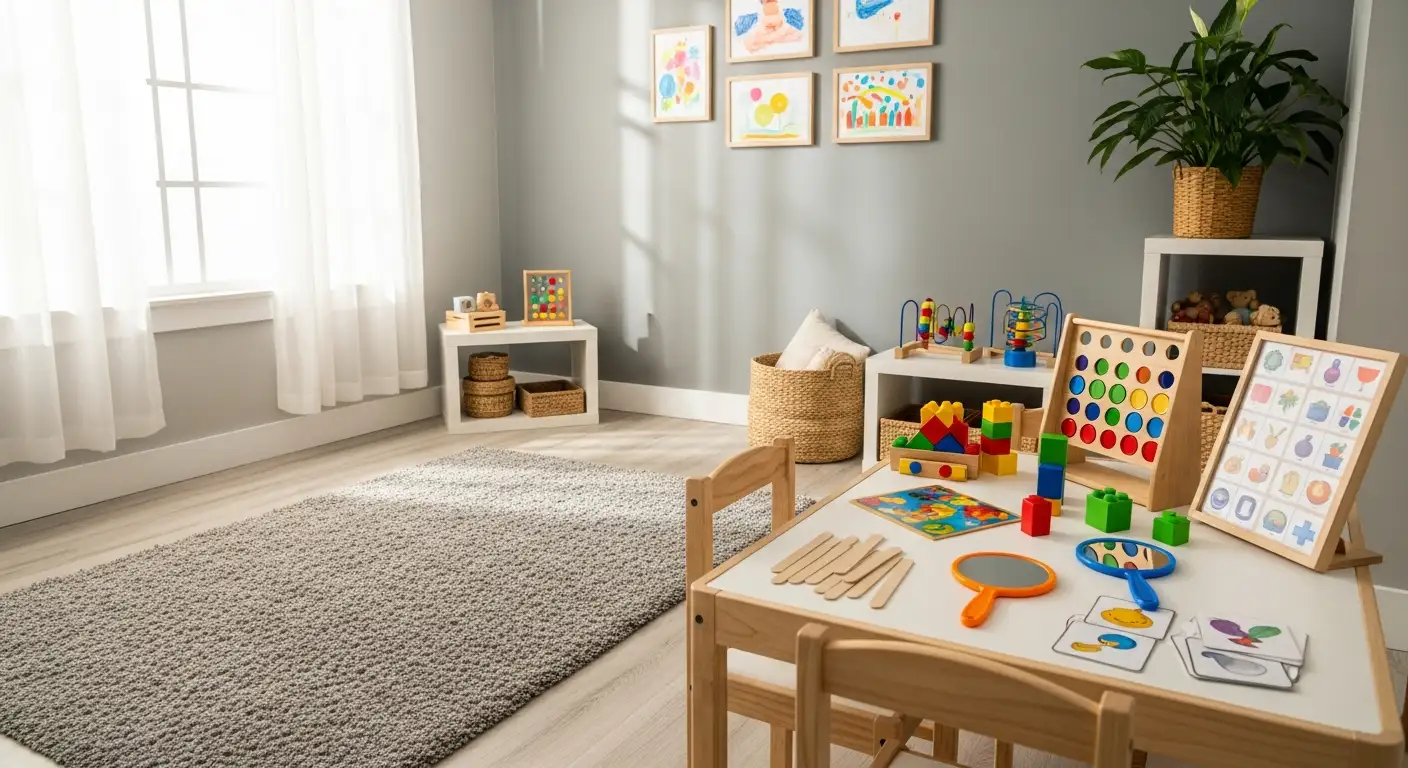Understanding Childhood Speech Apraxia and the Power of Intervention
Childhood apraxia of speech (CAS) is a complex motor speech disorder that impacts a child's ability to plan and coordinate the movements necessary for speech, despite having normal muscle strength. Early diagnosis and targeted speech therapy can significantly improve speech outcomes and overall communication skills. This article explores how therapy helps children with CAS, including evidence-based approaches, practical exercises, and ways caregivers can support their children’s progress.
What is Childhood Apraxia of Speech and Its Key Features

What is childhood apraxia of speech (CAS)?
Childhood apraxia of speech is a neurological disorder that affects a child's ability to plan and produce the precise movements needed for speech. Despite having normal muscle strength, children with CAS struggle with coordinating the lips, jaw, and tongue during speech. The core issue lies in the brain’s difficulty in timing and sequencing these movements, rather than muscle weakness or paralysis.
Though the exact cause of CAS remains largely unknown, it can sometimes be associated with genetic factors, neurological conditions, or developmental syndromes like Down syndrome. CAS is relatively rare, affecting about 3 to 5 out of every 100 preschoolers with speech delays.
Signs and symptoms of childhood speech apraxia
Children with CAS often know what they want to say but have trouble executing their speech. Early signs include limited babbling or vocal sounds between 7 and 12 months, which may be fewer than usual. As they grow, these children might begin speaking their first words later than typical—often after 12 to 18 months—and may have trouble combining sounds or syllables.
Common signs are inconsistent errors in speech, such as pronouncing the same word differently at different times. They may distort vowels, omit sounds, or stress words incorrectly. Longer or complex words can be especially challenging, leading to pauses or groping movements where the child searches for the right mouth position.
These speech patterns tend to be choppy, slow, or characterized by irregular rhythm and stress. Children may also show difficulty in initiating speech and have trouble with simple sequences like saying “hi” or “bye.” Speech may sound broken or voiceless, despite the child understanding language well.
Causes and associated conditions of CAS
The root cause of CAS often remains unknown. However, it might be related to abnormal brain development or signals that disrupt the coordination of speech muscles. In some cases, genetic factors like changes in the FOXP2 gene could increase the risk.
CAS can also occur alongside other developmental or neurological conditions, including cerebral palsy, autism spectrum disorder, epilepsy, and neuromuscular disorders. Family history of speech or learning disabilities may also indicate a higher likelihood.
Children with CAS are at risk for delayed language development, reduced vocabulary, and difficulties with grammar, reading, and writing. Early diagnosis and customized speech therapy are crucial for managing symptoms and promoting better communication skills.
Understanding Causes and Diagnosis of CAS
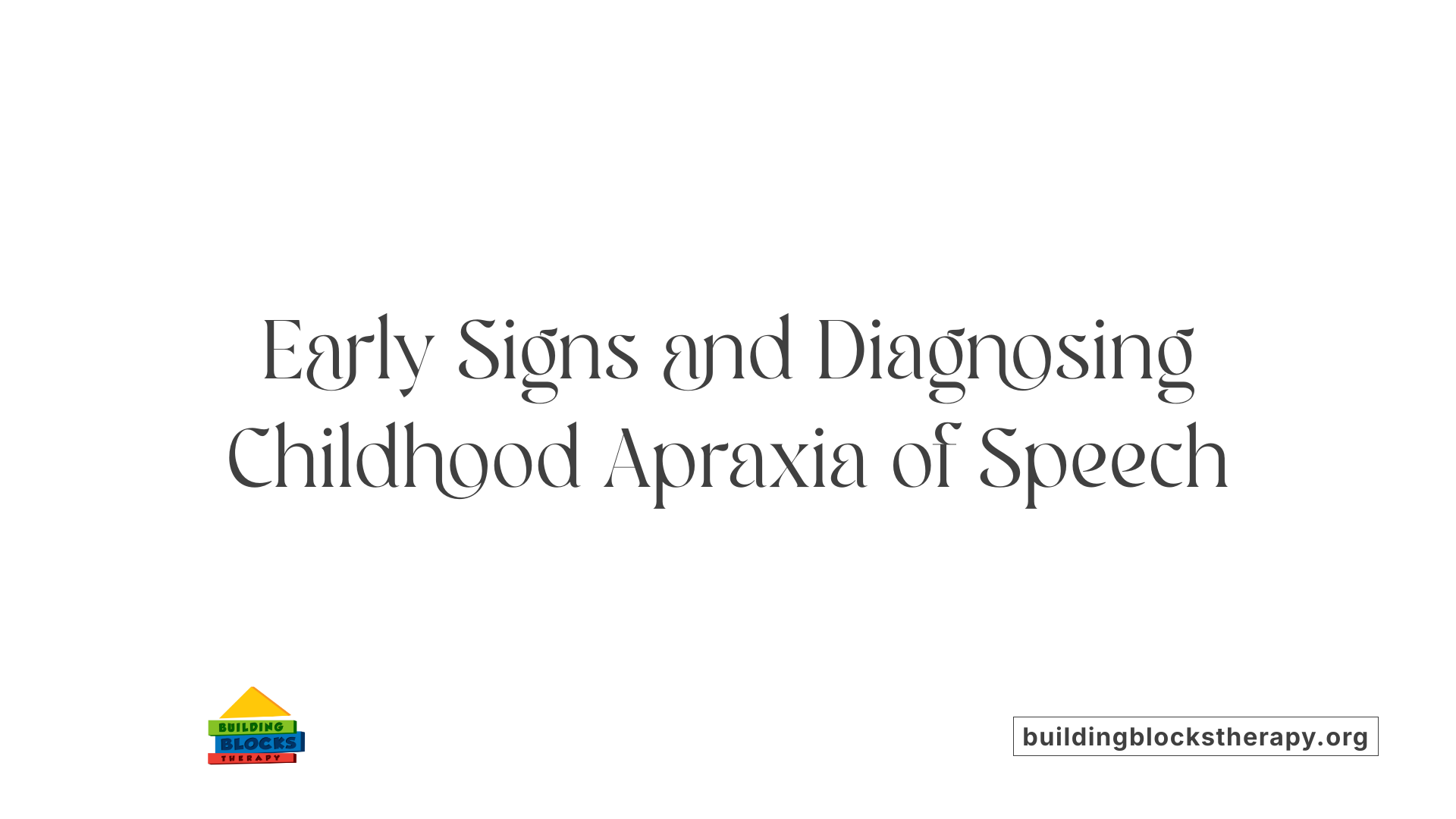
What are the early signs of childhood speech apraxia?
Early indications of childhood apraxia of speech (CAS) can appear from as young as 7 to 12 months. Infants may show limited babbling or vocal sounds, which are fewer than what typically develops at that age. As children reach their first year and beyond, some may start speaking their first words later than the usual 12 to 18 months and struggle with combining sounds or syllables.
One hallmark of CAS is inconsistent speech errors — the same word might be pronounced differently each time. Children often have distorted vowels, leave out sounds, or display abnormal stress and intonation patterns. They may also pause longer than usual between sounds, syllables, or words.
Difficulty with longer or complex words is common, and children may exhibit groping movements as they try to produce sounds. Speech tends to sound choppy, flat, or unmelodic, which can make understanding difficult even for familiar listeners.
These signs typically become more evident between 18 months and 2 years. Early concerns include trouble initiating speech, excessive mouth movements or groping, and a tendency toward inconsistent pronunciation. Recognizing these early markers allows for timely evaluation and intervention, improving long-term speech outcomes.
Therapeutic Approaches for Treating CAS
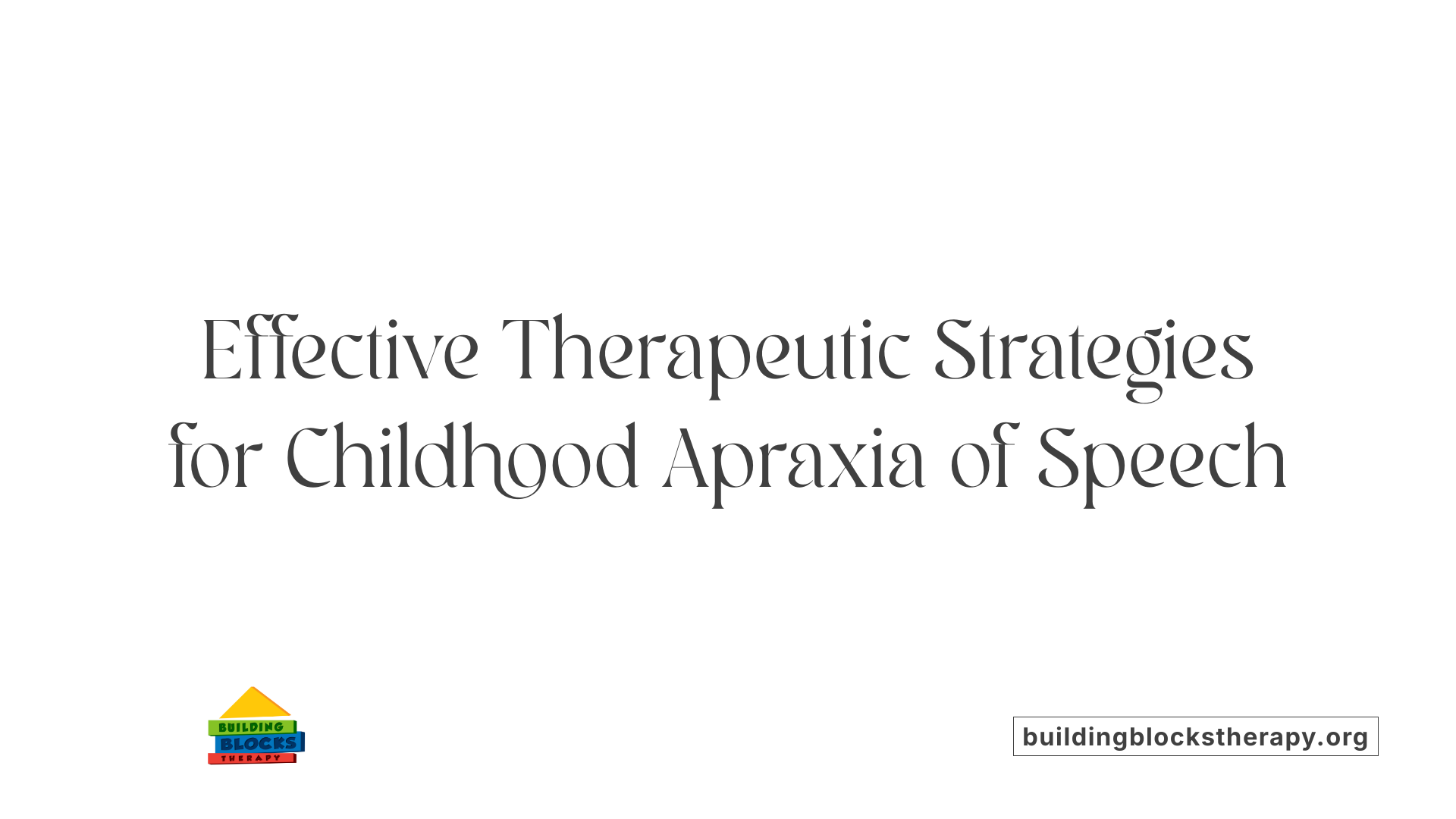
What therapy approaches are used for treating childhood apraxia of speech?
Treating childhood apraxia of speech (CAS) involves a variety of evidence-based strategies tailored to each child's age, severity, and specific needs. The goal is to improve speech motor planning and execution by engaging in targeted, repetitive activities that promote neural pathway development.
One highly researched method is Dynamic Temporal and Tactile Cueing (DTTC). This approach has demonstrated moderate effectiveness for children aged 2 and above who experience moderate to severe CAS. It emphasizes repetitive practice of speech movements with cues that combine auditory, visual, and tactile input to help children learn correct speech sequences.
Another well-supported therapy is Rapid Syllable Transition Training (ReST). ReST has robust evidence backing its efficacy, especially for children aged 4-12 with mild to moderate CAS. It focuses on teaching children to produce smooth transitions between syllables and to develop accurate motor plans for longer words, improving speech naturalness.
The Nuffield Dyspraxia Program (NDP3) and Integrated Phonological Awareness Training (IPA) are additional approaches used depending on the child's specific challenges. NDP3 provides structured sequencing of speech movements, while IPA integrates phonological skills to support speech clarity.
Therapists often incorporate multisensory cues—such as visual prompts, tactile feedback, and verbal modeling—to facilitate speech motor learning. Practice activities may include repeating targeted sounds, complex syllable sequences, and functional words or phrases, making therapy engaging and relevant.
Family involvement is critical, with parents encouraged to participate in structured home practice to reinforce progress. Additionally, augmentative and alternative communication methods, like picture boards or speech-generating devices, can support communication during the therapy process.
Overall, selecting the right therapy approach depends on careful assessment of each child's unique profile. Using evidence-based techniques and involving parents and caregivers enhances the chances of successful speech development.
Supporting Children and Enhancing Therapy Outcomes
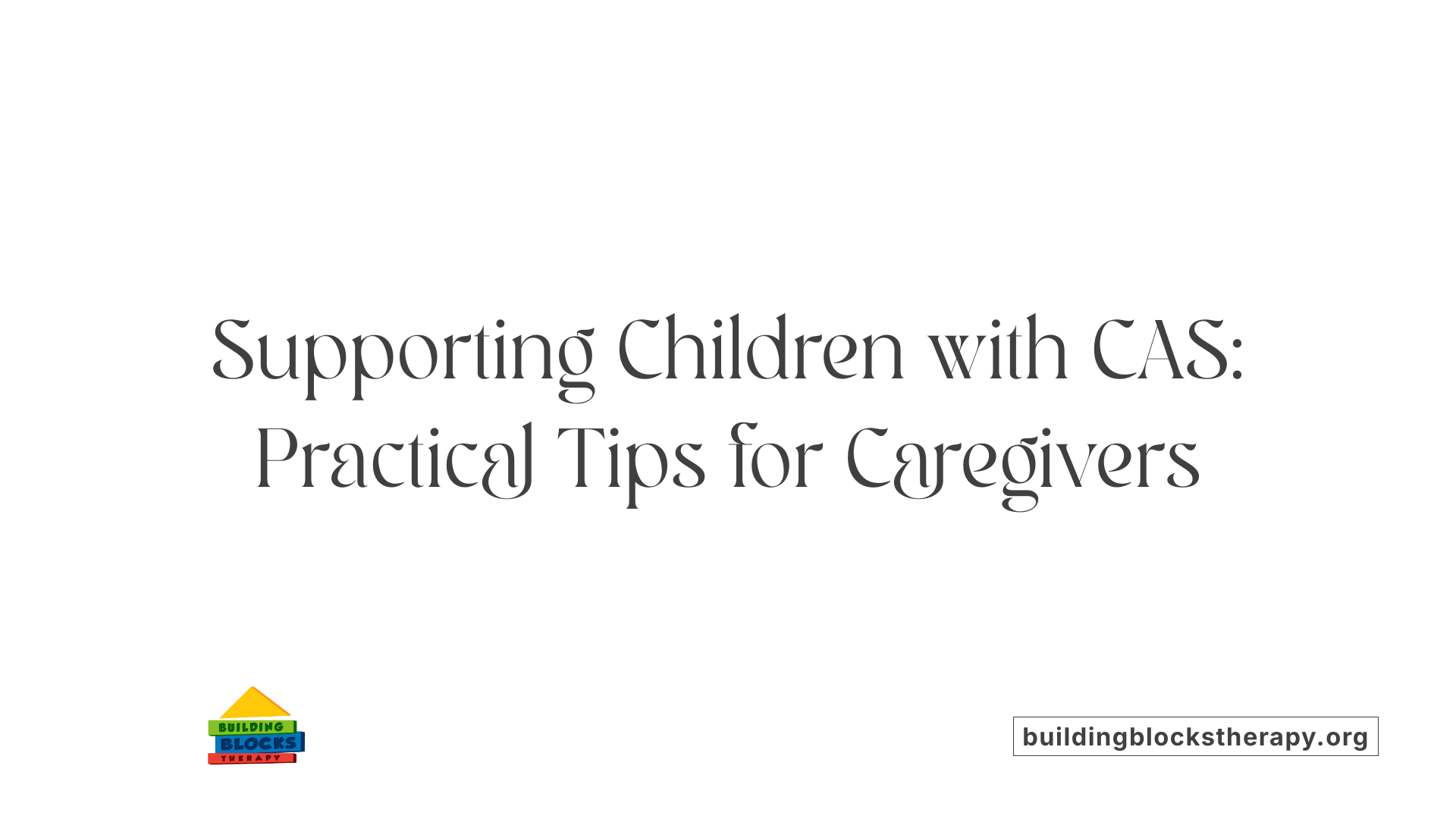
How can caregivers support children with speech apraxia?
Caregivers play a crucial role in supporting children with speech apraxia (CAS). Their active participation can significantly enhance the effectiveness of therapy and promote progress in speech development.
One effective way to support is by engaging in targeted speech activities designed to improve motor planning and coordination. For example, caregivers can select a specific sound, syllable, or word to focus on each day — often called a 'sound of the day.' Practicing this sound through playful activities like games or interactive routines helps embed the learning in everyday life.
Reading books that contain repetitive words or sounds at least 30 minutes daily offers meaningful practice in a relaxed setting. Such activities encourage children to imitate sounds and words in context, making the exercise both educational and enjoyable.
Incorporating fun tools such as flashcards, animal sound games, or descriptive activities can make speech practice entertaining. For instance, caregivers might use animal toys to mimic sounds or describe actions, encouraging children to repeat and imitate.
Establishing a consistent routine, including singing familiar songs or nursery rhymes, can help children develop a sense of rhythm and timing in speech. Play-based speech games that involve movement or pretend play not only motivate children but also strengthen motor planning skills.
Opportunities for repetition are vital. Repeating target sounds and words multiple times within daily activities builds neural pathways associated with speech motor sequences. Creating a supportive environment with positive feedback fosters confidence and reduces frustration.
Caregivers should work closely with speech-language therapists to implement specific exercises at home. Practice should be regular and tailored to the child's individual needs and progress.
Above all, maintaining patience, encouragement, and a positive attitude helps children feel motivated to participate in their own speech development journey. Consistent, engaging practice combined with professional guidance increases the likelihood of meaningful improvement in speech clarity and communication skills.
Effective Exercises and Activities in Speech Therapy for CAS
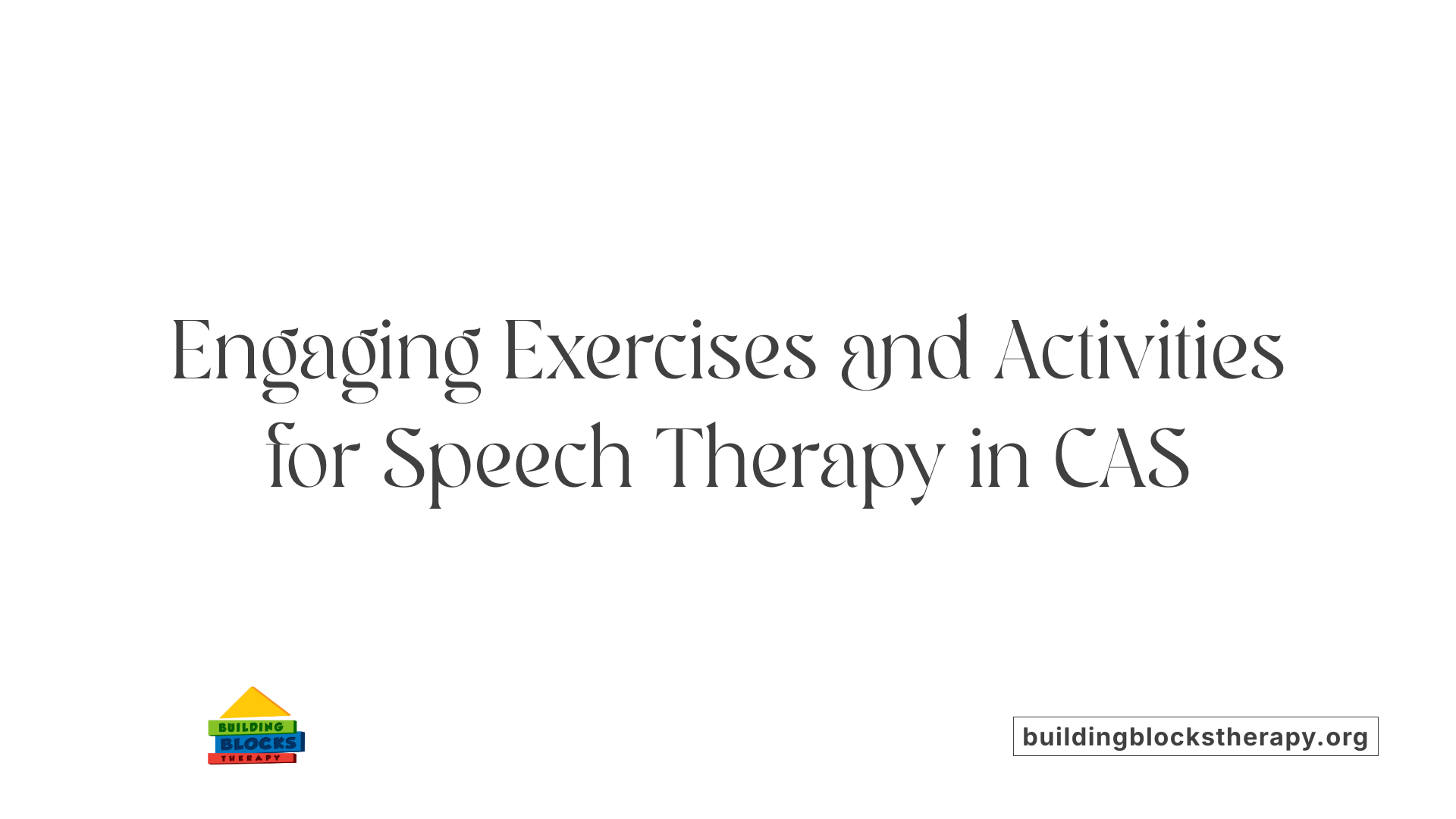
What are effective exercises and activities used during speech therapy for CAS?
For children with childhood apraxia of speech (CAS), therapy focuses on repetitive, functional activities that foster motor learning of speech movements. One proven approach involves practicing speech sounds and sequences within meaningful words, phrases, and stories. The goal is to help the brain develop new motor patterns for speech through frequent repetition.
Therapists often use visual aids like flashcards, matching games, and pictures of animals or objects to create engaging ways to practice target sounds. Tactile cues, such as touch or physical prompts on the face, lips, or tongue, assist children in feeling the correct movements needed for speech.
Incorporating multisensory strategies—visual, tactile, and auditory—helps reinforce learning. For example, therapists may instruct children to listen carefully to sounds, watch mouth movements, and feel placement cues simultaneously.
Home-based activities are vital in supporting progress. These include reading repetitive books with similar sounds or patterns, playing gesture-based games like peek-a-boo, and using toys that encourage actions paired with specific sounds. Creating opportunities for daily practice by parents and caregivers enhances therapy outcomes.
Augmentative and alternative communication methods, such as sign language, picture boards, or speech-generating devices, can provide additional support, especially during initial stages or when frustration builds.
Overall, effective exercises are those that are frequent, engaging, tailored to the child's needs, and involve practicing speech movements within meaningful contexts.
Research on Treatment Outcomes and Future Directions
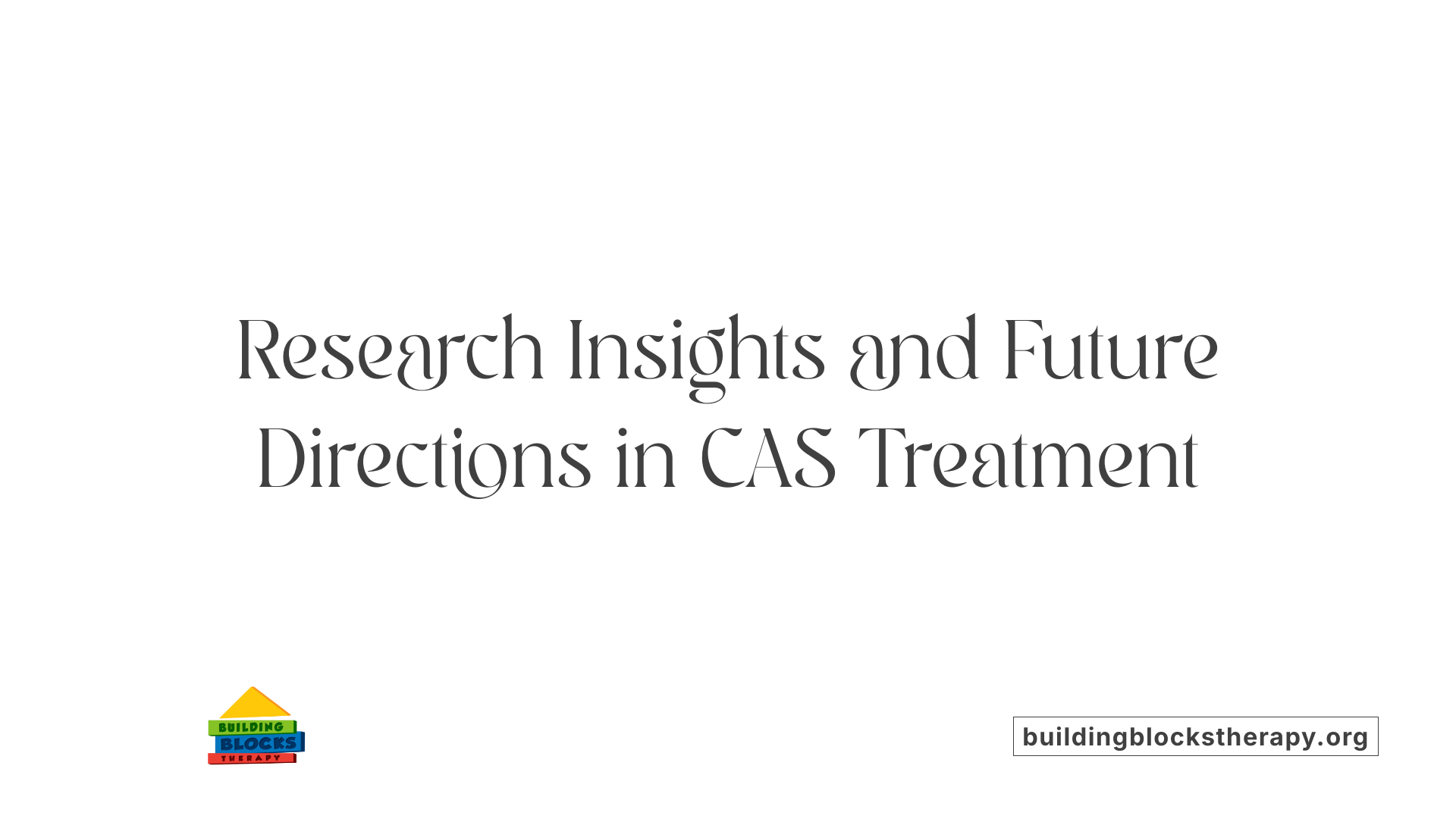
What does current research say about treatment outcomes and future directions for speech therapy in CAS?
Recent studies highlight that the success of speech therapy for childhood apraxia of speech (CAS) varies considerably depending on factors like severity, age at intervention, and co-existing conditions such as autism or cerebral palsy.
Techniques like integral stimulation, PROMPT, ultrasound biofeedback, and Dynamic Temporal and Tactile Cueing (DTTC) have demonstrated promising results, leading to notable improvements in speech accuracy and intelligibility among children.
Evidence suggests that early diagnosis and intensive, consistent practice are crucial for achieving better outcomes. Therapies emphasizing motor learning principles—practice, repetition, and specific feedback—are particularly effective.
Looking forward, researchers are focusing on broadening the scope of measurement beyond speech accuracy. Future assessments aim to include functional communication, social participation, and quality of life to better capture therapy benefits.
Innovations such as teletherapy, group-based sessions, and caregiver-mediated approaches are being explored to improve access and continuity of care.
Further research is also investigating predictors of treatment success—like genetic markers or neuroimaging findings—to customize interventions more effectively.
While many children show improvement through specialized therapy, some continue to face persistent speech issues. This necessitates ongoing research to refine techniques, optimize treatment duration, and develop new modalities.
Overall, advancing our understanding of CAS treatment efficacy depends on large-scale, controlled studies, and adopting a holistic approach that considers individual needs and environmental factors.
The Significance of Therapy in Enhancing Communication and Confidence
How does speech therapy support children with speech apraxia in developing communication skills?
Speech therapy plays a vital role in helping children with childhood apraxia of speech (CAS) improve their communication abilities. Since CAS involves difficulty planning and executing speech movements despite knowing what to say, therapy focuses on teaching these children how to coordinate their mouth, lips, and tongue movements more effectively.
Therapists use various specialized exercises and techniques rooted in motor learning principles. These include repetitive practice of sounds, syllables, and functional words, allowing children to develop greater control over their speech movements. Visual, auditory, and tactile cues—such as finger touch, pictures, and listening tasks—are employed to reinforce correct movement patterns.
Gradually, therapy targets move from simple sounds to more complex words and sentences, building confidence along the way. Feedback, tailored to each child's progress, guides them to refine their speech, ensuring steady advancement.
In addition, involving family members and providing home practice strategies enhance learning and consistency. Overall, targeted speech therapy not only improves speech clarity but also fosters motivation and boosts self-esteem, helping children communicate more effectively and confidently.
Empowering Children Through Speech Therapy
Speech therapy plays a vital role in helping children with childhood apraxia of speech develop clearer speech, improved communication skills, and greater confidence. Through evidence-based techniques, personalized exercises, and active caregiver involvement, children can overcome motor planning challenges, participate more fully in social and academic settings, and achieve greater independence. Ongoing research continues to refine treatment approaches, promising a brighter future for children with CAS and their families.
References
- Childhood Apraxia of Speech - ASHA
- What makes Speech Therapy Different for Children with Apraxia?
- Child Apraxia Treatment – Providing free resources to both parents ...
- Childhood Apraxia of Speech - Cedars-Sinai
- Apraxia - Speech Therapy FAQs
- Childhood Apraxia of Speech: Early Signs & Treatment Options
- Treatment for Childhood Apraxia of Speech: Past, Present, and Future
- Childhood Apraxia of Speech (CAS): Symptoms & Treatment
- Treatment Methods - Child Apraxia Treatment
- Childhood Apraxia of Speech | Children's Hospital of Philadelphia






